
100. yılını idrak ettiğimiz Cumhuriyet çocuğa sevgi, gence güven, yaşlıya saygı ve hürmet üzerine kurulmuştur.
Cumhuriyet, merkezinde cumhurun/halkın olduğu yönetim sistemidir.
Halkın/cumhurun temelini kökünü yaşlı, gövdesini/dallarını genç, meyvesini ise çocuk oluşturur.
Cumhuriyetin kurucu önderleri sözleriyle bu gerçeklere işaret etmişlerdir.
Mustafa Kemal Atatürk; “Bence çocuk vatan gibi sevilmeli, ulusun haklarını korur gibi korunmalıdır” sözleriyle çocuğa verdiği değeri ifade etmiştir.
Gençliğe hitabıyla cumhuriyeti onlara emanet ettiğini ifade ederek onlara güvenini ortaya koymuştur.
“Cumhuriyet bilhassa kimsesizlerin kimsesidir” sözüyle de yaşlı, engelli gibi bütün dezavantajlı gruplara saygı ve hürmete dikkat çekmiştir.
Atatürk’ün silah arkadaşı Kazım Karabekir Paşa’da hayatında büyük başarılara imza atmasına rağmen “hayatımdaki en büyük iftihar vesilem altı bin çocuğa bakmaklığım olmuştur” sözüyle çocuğa sevgi ve bakımı öncelediğini dile getirmiştir.
Kazım Karabekir Doğu Cephesi'ne geldiği ilk günlerde yaptığı çalışmalarla 50 bine yakın bakıma muhtaç çocuk olduğunu rapor etmişti. Bu çocuklar sokaklarda, ağaç kovuklarında, mağaralarda, ağaç yaprakları ve ot yiyerek hayatta kalmaya çalışan sersefil halde çocuklardı.
4 bini erkek 2 bini kız olmak üzere sadece Erzurum civarında 6 bin yetim ve öksüz çocuk Kazım Karabekir tarafından sokaklardan ya da bakamayacak durumda olan akrabalarının yanından toplatılmıştı ve bu çocuklara temsili olarak Gürbüz Çocuklar Ordusu ismi verildi.
Bu çocuklara kayak dersi de dâhil olmak üzere verilen askeri eğitimlerin yanı sıra birçok alanda zanaat eğitimi de verildi.
Kazım Karabekir 'Çocuk Davam' dediği konudaki ciddiyetini göstermek ve Mustafa Kemal'in desteğini alabilmek için çocukların bir kısmını Ankara'ya götürdü.
Tarihçi Cemal Kutay Atatürk'ün bu çocuklardan çok etkilendiğini söyleyerek şunları belirtiyor:
“Atatürk, Kırklareli Milletvekili Dr. Fuat Umay’ı bizzat bu çocukların eğitimi ve sağlığıyla ilgilenmesi için görevlendirdi. Latife Hanım ise bu çocuklarla ilgilenmeyi ulvi bir görev kabul etti; eğitimleri ve bakımlarıyla bizzat ilgilendi. Karabekir Paşa, bu çocukları Ankara’ya Paşa’nın huzuruna getirirken amacı, tüm ülkedeki yetimlere ve kimsesiz çocuklara dikkat çekerek onların eğitimini sağlayacak okullar kurdurtmaktı. Amacına ulaştı. Onun kurduğu sanayi mektepleri şimdiki meslek lisesi.'
Koruma altına alınan 6 bin çocuğun arasında sadece Türk çocukları yoktu. Kimsesiz kalmış Ermeni çocukları da koruma altına alınmıştı.
Kızı Timsal Karabekir şu sözleri babasının çocuğa yönelik hizmetlerini anlatmıştı:
'İnanması gerçekten güç ama o günün koşullarında sinemacılık, şimendifer, buhar makinesi tamiri, sıhhiyecilik eğitimleri dahi veriliyordu. Hatta çocuklar küçük çaplı ameliyat yapabilecek duruma gelmişti. Orduya potin, kıyafet dikerek de yarar sağlıyorlardı. Bugün bile yaygın olmayan spor dallarında eğitim alıyorlardı. Babamın üç kızı ve yanı sıra binlerce çocuğu vardı. Son nefesine kadar onlarla yazıştı, dertlerine, sevinçlerine ortak oldu. Milletvekilliği sırasında, sokak çocukları ile ilgili kanunu meclisten geçirmeye çalışırken kalp krizi geçirerek yaşama veda etti. Onun çocuklarla ilgili çalışması, bugün yaşadığımız çocuk sorunlarını çözecek nitelikte.'
100. yılını idrak ettiğimiz Cumhuriyet çınarının güçlenmesi gerçek anlamda cumhurun/halkın temel taşları olan çocuğa sevgi ve emeğin, gence güven ve değerin ve yaşlıya saygı ve hürmetin hakkıyla yerine getirilmesi ile mümkündür.
Love for Children, Trust in Young People and Respect for Elderly
The Republic, whose 100th anniversary is celebrated, was founded on love for children, trust in young people, respect and respect for the elderly.
Republic is a system of government with the republic/people at its center.
The foundation of the people/republic is formed by the old, the trunk/branches by the young, and the fruit by the child.
The founding leaders of the Republic pointed out these facts with their words.
Mustafa Kemal Atatürk; He expressed the value he attaches to the child by saying, "I think the child should be loved like a homeland and protected as if protecting the rights of the nation."
In his address to the youth, he expressed his trust in them by stating that he entrusted the republic to them.
He drew attention to the respect and respect for all disadvantaged groups, such as the elderly and the disabled, with the statement "The Republic is especially the orphan of the orphans".
Kazım Karabekir Pasha, Atatürk's comrade-in-arms, stated that although he achieved great success in his life, he prioritized love and care for children, saying, "The greatest pride in my life was that I took care of six thousand children."
Kazım Karabekir reported that there were nearly 50 thousand children in need of care through his work in the first days of his arrival on the Eastern Front. These children were miserable, trying to survive on the streets, in tree holes, in caves, by eating tree leaves and grass.
Around Erzurum alone, 6 thousand orphaned children, 4 thousand of whom were boys and 2 thousand of whom were girls, were collected by Kazım Karabekir from the streets or from their relatives who were unable to care for them, and these children were named the Strong Children's Army to represent them.
In addition to military training, including ski lessons, these children were also given craft training in many areas.
Kazım Karabekir took some of the children to Ankara to show his seriousness about the issue he called 'My Children's Cause' and to get Mustafa Kemal's support.
Historian Cemal Kutay says that Atatürk was very impressed by these children and states the following:
“Atatürk, Kırklareli Deputy Dr. He personally assigned Fuat Umay to take care of the education and health of these children. Latife Hanım accepted taking care of these children as a sublime duty; He personally took care of their training and care. When Karabekir Pasha brought these children to Ankara to the Pasha, his aim was to draw attention to the orphans and homeless children in the whole country and have schools established to provide their education. He achieved his goal. The industrial schools he founded are today's vocational high schools.'
Turkish children were not the only ones among the 6 thousand children taken under protection. Orphaned Armenian children were also taken under protection.
His daughter Timsal Karabekir described her father's services to the child in the following words:
'It's really hard to believe, but under the conditions of those days, training in cinema, railway, steam engine repair and sanitation was even given. Children were even able to perform minor surgery. They also benefited the army by sewing shoes and clothes. They were training in sports that are not common even today. My father had three daughters and thousands of children besides him. He corresponded with them until his last breath and shared their troubles and joys. While he was a member of parliament, he died of a heart attack while trying to pass the law regarding street children. His work on children is capable of solving the children's problems we experience today.'
The strengthening of the Republic plane tree, whose 100th anniversary is celebrated, is possible by properly fulfilling the love and effort for children, trust and value for young people, and respect and respect for the elderly, which are truly the cornerstones of the republic/people.
 Erol Sunat
Biz Bizden Gidemeyiz
Erol Sunat
Biz Bizden Gidemeyiz
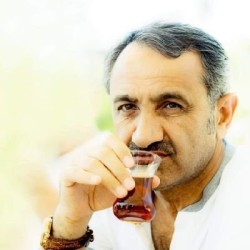 Dr. Cemil Paslı
Özeleştiri mi/Savunma mı?
Dr. Cemil Paslı
Özeleştiri mi/Savunma mı?
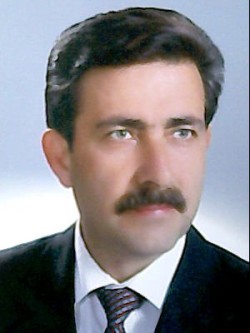 Mehmet Karataş
Lale Devrini Yaşıyoruz.
Mehmet Karataş
Lale Devrini Yaşıyoruz.
 İmdat Yayla
Teşkilatın İl ve İlçe Başkanlığına Liyakatli insanlar Getirilmeli
İmdat Yayla
Teşkilatın İl ve İlçe Başkanlığına Liyakatli insanlar Getirilmeli
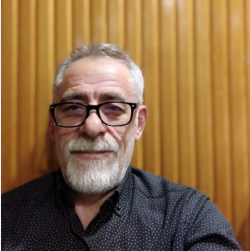 ŞÜKRÜ PORTAKAL
Neden Kazanamadılar
ŞÜKRÜ PORTAKAL
Neden Kazanamadılar
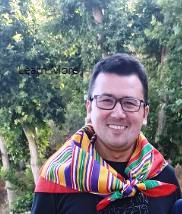 Muhammed Kemal Erdem
Harunlar Köyü Adını Seyyid Harun Veli’den mi Alıyor?
Muhammed Kemal Erdem
Harunlar Köyü Adını Seyyid Harun Veli’den mi Alıyor?
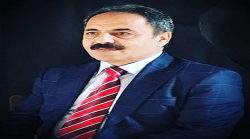 Mahmut İşcan (İlçe Milli Eğitim Müdürü)
Güzel Bak Güzel Gör
Mahmut İşcan (İlçe Milli Eğitim Müdürü)
Güzel Bak Güzel Gör
 Ayşe ÜNÜVAR :(Uzm. Psk. Dan. Eğitimci Yazar)
Eskidendi Şivlilik
Ayşe ÜNÜVAR :(Uzm. Psk. Dan. Eğitimci Yazar)
Eskidendi Şivlilik
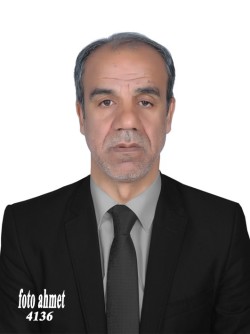 Duran Çölcü
Savunma Sanayinde Konya’nın Gücü Giderek Artıyor
Duran Çölcü
Savunma Sanayinde Konya’nın Gücü Giderek Artıyor
 PROF. DR. ŞAHİN AKINCI
Bir Yargı Krizi: Yargıtay’ın Şerafettin Can Atalay Kararı
PROF. DR. ŞAHİN AKINCI
Bir Yargı Krizi: Yargıtay’ın Şerafettin Can Atalay Kararı
